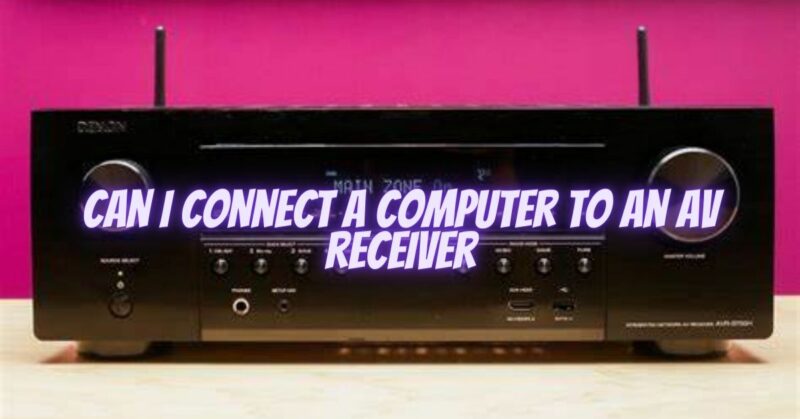Computers have become versatile multimedia devices capable of storing and playing various types of digital content, including music, movies, and games. To fully enjoy the audio and video capabilities of your computer, connecting it to an AV receiver can elevate your entertainment experience. In this article, we will explore how you can connect a computer to an AV receiver, enabling you to harness the power of your computer’s multimedia capabilities and enjoy content on your home theater system.
Methods of Connecting a Computer to an AV Receiver:
- HDMI Connection: The most straightforward and versatile method of connecting a computer to an AV receiver is through an HDMI (High-Definition Multimedia Interface) connection. Most modern computers and AV receivers feature HDMI ports, allowing for easy and high-quality audio and video transmission. Connect one end of an HDMI cable to the HDMI output port on your computer and the other end to an available HDMI input on the AV receiver. Ensure that you select the corresponding HDMI input on the AV receiver to receive the computer’s audio and video signals.
- DisplayPort or Mini DisplayPort Connection: If your computer features a DisplayPort or Mini DisplayPort output, you can connect it to an HDMI input on the AV receiver using a DisplayPort-to-HDMI or Mini DisplayPort-to-HDMI adapter cable. This method provides similar audio and video capabilities as the HDMI connection, allowing you to enjoy high-quality multimedia content.
- VGA or DVI Connection: If your computer does not have HDMI or DisplayPort outputs, you can use VGA (Video Graphics Array) or DVI (Digital Visual Interface) connections to connect to the AV receiver. However, VGA and DVI are video-only connections, so you will need to use a separate audio connection, such as a 3.5mm audio cable or a digital audio cable, to connect the computer’s audio output to the AV receiver’s audio input. VGA and DVI connections may not support audio, so ensure that your computer has alternative audio outputs, such as a headphone jack or a separate audio output port.
- Wireless Streaming: Another option to connect a computer to an AV receiver is through wireless streaming technologies. Some AV receivers support wireless connectivity standards such as Bluetooth or Wi-Fi. By connecting your computer to the same wireless network as the AV receiver, you can stream audio and, in some cases, video content wirelessly to the receiver. This method offers convenience and flexibility, allowing you to access multimedia content from your computer without physical connections.
Audio Configuration Considerations: When connecting a computer to an AV receiver, it’s important to configure the audio settings appropriately. Access the audio settings on your computer and select the AV receiver as the default audio playback device. This ensures that the audio signals from your computer are directed to the AV receiver for amplification and playback through your connected speakers.
Conclusion: Connecting a computer to an AV receiver expands your multimedia capabilities and allows you to enjoy digital content on your home theater system. Whether through HDMI, DisplayPort, VGA, DVI, or wireless streaming, there are various methods to establish the connection. By leveraging the audio and video transmission capabilities of these connections and configuring the appropriate audio settings, you can seamlessly integrate your computer into your AV receiver setup, enhancing your entertainment experience and bringing the power of your computer’s multimedia capabilities to your home theater.

